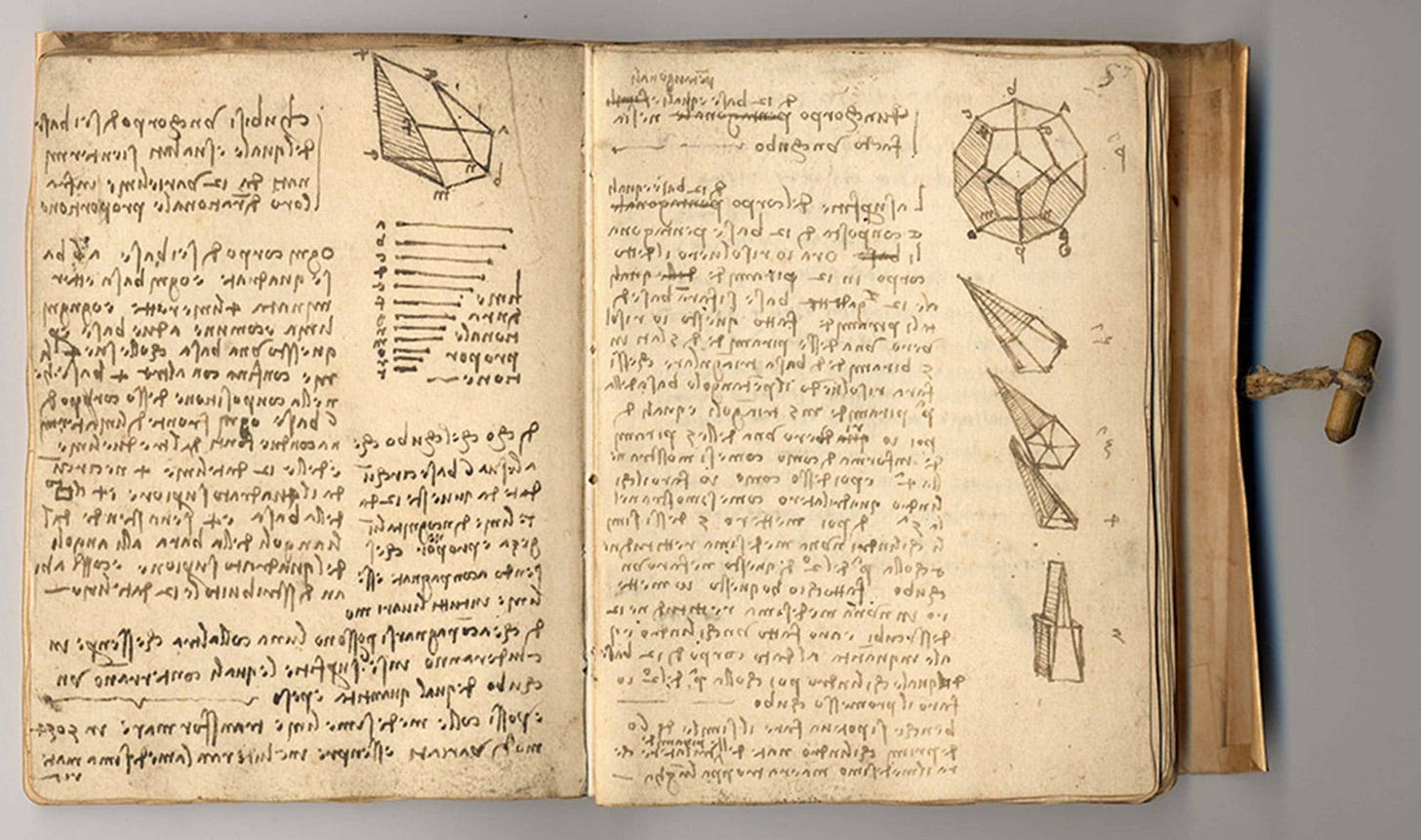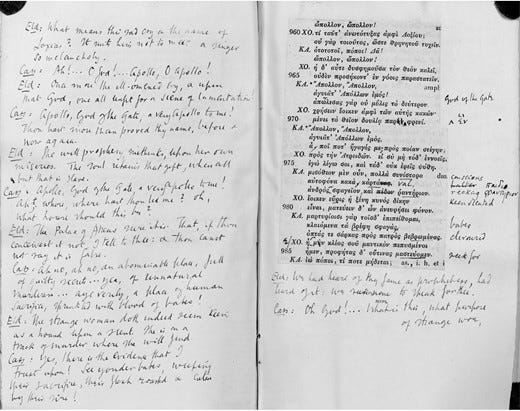Why I Ditched Zettelkasten for a Centuries Old Note-Taking System (& you should too)
Why an ancient system + modern technology is the perfect combination for knowledge work
You're reading Knowledge Work Rebooted — where we ditch outdated note-taking habits & build smarter, AI-enhanced knowledge systems that help you get real work done.
When I first started as a creator about five years ago, everyone was obsessing over "How to Take Smart Notes" & the Zettelkasten method was the holy grail of note-taking.
You couldn't scroll through productivity Twitter without someone sharing their elaborate numbering system or perfectly atomic notes. I watched countless people build these incredibly sophisticated note-taking systems. They'd spend weeks perfecting their setups, connecting everything to everything else until their systems looked like spider webs designed by someone having a breakdown.
And then they'd just... stop using them.
They've turned something that should spark joy into a part-time job that makes them dread opening their notes.
The Academic Trap We've All Fallen Into
Here's the truth about Zettelkasten: It's an academic research system. Created by Niklas Luhmann, a German professor who wrote 60 books & countless research papers, it was designed for someone whose literal job was to synthesise complex theoretical knowledge across multiple disciplines.
Most of us aren't writing doctoral dissertations. We're trying to make sense of the podcasts we listen to, the articles we read, & the random thoughts that hit us in the shower. Yet we've convinced ourselves we need the same rigorous system that a professional researcher used to produce academic work.
It's like using a Formula 1 car to drive to the grocery store. Technically impressive, but completely overkill for what you actually need.
And here's the kicker - Luhmann built his system in an analog world. No search functions, no AI, no ability to instantly find connections across thousands of notes. All that manual organisation & linking? It was necessary 50 years ago. Today, it's just busywork that keeps us from the real purpose: thinking & exploring ideas.
What We Actually Need: The Commonplace Book Renaissance
Instead of a strict Zettelkasten method. I've found myself combining the ZT method with a much simpler ancient method - the commonplace book.
Leonardo da Vinci kept one. Charles Darwin kept one. Virginia Woolf kept one. They were creatives, explorers, inventors - people interested in ideas and making sense of the world around them, not people who needed to write academic essays.
A commonplace book says: 'Something caught your attention today? Throw it in here.' Just a pure, joyful collection of the things that make you spark.
This isn't about being lazy or unorganised. It's about recognising that the work isn't in the organisation - the work is in the thinking & exploring of ideas. All that time you spent perfecting your Zettelkasten structure? That was time stolen from actually exploring your ideas.
How Technology Changes Everything
But here's where it gets exciting. While the commonplace book philosophy is ancient, modern technology makes it absolutely revolutionary.
Search replaces structure. You don't actually need perfect organisation when you can instantly search across every note you've ever captured. That random quote from 3 years ago? One search term away.
AI creates connections. Remember spending hours manually linking related notes? AI can now scan your entire knowledge base & surface connections you never would have made. It's like having a research assistant who never sleeps & remembers everything. It takes so much of the heavy lifting of the organising we used to do and does it effortlessly in seconds.
Multimedia capture. Unlike our pen-and-paper predecessors, with modern knowledgde systems you can capture anything that sparks you - articles, audio clips, videos, photos, voice notes. Your commonplace book becomes a rich, multimedia reflection of your curiosity.
My Tana Commonplace Book System
This is why I moved my entire knowledge practice to Tana. It's built for exactly this kind of effortless capture & intelligent connection.
Effortless capture.
With Tana Capture, I can save anything that sparks me in seconds. Article that made me think? Captured. Podcast quote that resonated? Captured. Random shower thought? Captured. The friction is so low that I actually want to save things.
Intelligent organisation.
Instead of manually categorising everything, I let Tana's AI do the heavy lifting. When I capture something new, I can click "find connections" & it searches through all my previous notes to find related ideas. Not just keyword matches - actual conceptual connections that mirror how my brain works.
Everything in context.
Unlike rigid note-taking systems, Tana lets each idea exist in multiple contexts simultaneously. A single note about creativity can appear in my writing projects, my business thinking, & my personal development - all without duplication or complex linking systems.
How to Build Your Own Commonplace Book System
If you've tried Zettelkasten & felt overwhelmed, you're not broken. You don't like discipline. It's because the system wasn't built for what you're actually trying to do. Most of us aren't trying to write 60 academic books - we just want to make sense of our ideas. Here's how to build a commonplace book system that actually works:
Step 1: Choose the Right Tool
Not every note-taking app is built for modern commonplace books. Here are the non-negotiables for a tool that will support this approach:
Backlinking capability. You need to be able to connect notes together easily. Tana excels at this, as does Obsidian. These connections should feel natural, not forced.
Flexible organisation. Whether through tags, fields, or other methods, you need some way to organise without rigid hierarchy. You're not building a filing cabinet - you're building a web of ideas.
Integrated AI. This is crucial. Your tool should have AI built in so you can create agents that help make connections, surface related ideas, & do the organisational heavy lifting that used to steal your creative energy.
That said, at the end of the day, you should use a tool that brings you joy. Even if it doesn't have all these features, if you love using it, it's the right one for you. The great thing about modern technology is it's catching up almost everyday.
Step 2: Create a Simple Capture System
Make it ridiculously easy to capture things & move on with your day. For me, that's one note type - a "Spark Note" set up as a Tana supertag. It's easy to capture from:
My computer during work
My phone when I'm out
Reading apps through Readwise integration
Audio or video content through Tana Capture
The key is one consistent capture method that works across all your contexts. No decision fatigue about where something should go.
Step 3: Bring AI in to Do the Connecting
This is where modern commonplace books have a real advantage over our ancient counterparts. In the past, without AI & sophisticated search, we had to do all that manual organisational work ourselves. This is exactly why Zettelkasten developed those elaborate numbering systems & rigid structures - it was the only way to find & connect things later.
Most modern note-taking tools have search, connections, & related notes features that make linking your ideas much easier. Plus with AI layered on top of our notes i can handle most of the manual work of finding potential connections. For example I have an AI command setup in Tana called 'Find Connections' that searches through al my previous notes & surfaces related ideas that are relevant. It's incredibly helpful in making those first type of connections.
But even though technology can handle all this heavy lifting now, it shouldn't replace your thinking. Making connections is still crucial for how our brains work - you're still the one deciding which connections matter & making sense of how ideas relate to each other.
Step 4: Make Exploration Your Practice
One of the biggest reasons Zettelkasten systems fail is it turns note review into a rigid job. You've got daily review schedules, spaced repetition systems, elaborate processing workflows. It starts to feel like homework instead of exploration.
Instead of all that forced homework, develop a practice of thinking & exploring.
Over the years, I've developed a consistent practice of getting into my notes & thinking through ideas - not following a rigid daily review schedule, but having a regular rhythm of exploration. The mindset shift is crucial: you're not maintaining a filing system, you're cultivating curiosity
Instead use your commonplace book as a thinking partner, not a task list. I don't ever feel the need to start at the top of my notes and work my way through a list of notes I need to file away. I start with an idea that calls to me, that I can get excited about. I let myself wander through connections and go down rabbit holes. I write, I ponder, I talk it out (with voice notes).
This is the real work. It's not how many notes you can neatly file away today. The goal is to think better, explore deeper, & turn the inspiration you encounter every day into knowledge you can actually use.
Your commonplace book should feel like a treasure chest of sparks, not a filing cabinet of obligations. When you open it, you should feel excited about what you might discover - not stressed about what you need to organise.
The Renaissance thinkers were onto something. It just took us 500 years - & some really smart technology - to make their approach accessible to everyone.
Whenever You're Ready To Build A Personal Knowledge System That Actually Works — Here Are Couple Of Ways I Can Help:
Ready to ditch rigid note-taking systems & build your own commonplace book that captures sparks without the overwhelm? My course Knowledge Alchemy teaches you how to set up a sustainable note-taking practice that feels like exploration, not homework.
Want AI to surface connections & do the organisational heavy lifting like I described? My AI Note-Taking Playbook gives you the exact prompts to make AI your research assistant while you focus on the meaningful thinking.











I've started using Kortex as it connects with documents and has AI built in.. paid versions have the premium ai models. It even has Zettelkasten training and my Ev flag went up 🤣
Very interesting read! You made me think about my use of Zettelkasten, which I build the last couple of years. I build it in Notion and Notion has AI built in. Obviously you have your system ready, but what do you think about Notion AI and implementing this in Notion?